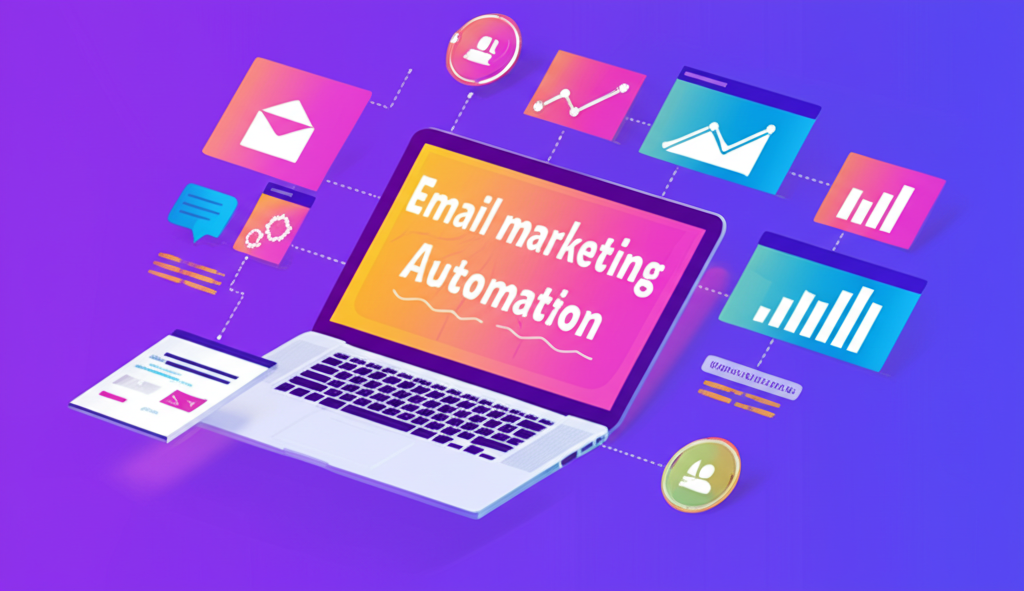Email Marketing Automation: Building Sequences That Convert

Master the art of email automation with proven sequences that nurture leads and drive consistent revenue growth.
Email marketing remains one of the most effective digital marketing channels, boasting impressive ROI when executed correctly. However, manually sending individual emails to a growing list of subscribers is inefficient and unsustainable. This is where email marketing automation shines, enabling businesses to deliver timely, personalized, and relevant messages at scale, often leveraging insights from broader AI-powered marketing strategies to enhance effectiveness. Building effective automated email sequences is key to nurturing leads, engaging customers, and ultimately driving conversions. Understanding your content marketing ROI can help inform the type of content you automate in these sequences.
Understanding Email Automation Sequences
An email automation sequence (also known as a drip campaign or autoresponder series) is a series of emails sent automatically to subscribers based on specific triggers or timelines. These triggers can include:
- A new subscriber signing up for a newsletter.
- A user downloading a lead magnet.
- A customer making their first purchase.
- A user abandoning their shopping cart.
- A subscriber's birthday or anniversary.
- Specific engagement (or lack thereof) with previous emails.
The power of automation lies in its ability to deliver the right message to the right person at the right time, without manual intervention for each send. This often involves strategies for personalization at scale.
Essential Email Sequences That Convert
1. Welcome Sequence
This is arguably the most crucial sequence. When a new subscriber joins your list, they are highly engaged. A welcome sequence should:
- Deliver on Promise: If they signed up for a discount or lead magnet, provide it immediately.
- Introduce Your Brand: Share your story, mission, and what makes you unique.
- Set Expectations: Let them know what kind of content they can expect and how often.
- Encourage Engagement: Prompt them to follow you on social media, visit a key website page, or whitelist your email address.
- Nurture Towards a First Action: Gently guide them towards a relevant product, service, or piece of content.
A typical welcome sequence might span 3-5 emails over a week, each providing value and building the relationship.
2. Lead Nurturing Sequence
Once a lead shows interest (e.g., by downloading an ebook), a nurturing sequence educates them further and positions your solution. This sequence should:
- Address Pain Points: Focus on the challenges your target audience faces.
- Provide Value: Offer helpful tips, case studies, webinars, or testimonials related to their interest.
- Build Trust and Authority: Showcase your expertise and credibility.
- Segment Based on Engagement: Tailor subsequent emails based on how they interact with the content (e.g., clicked a specific link).
- Include Clear Calls-to-Action (CTAs): Guide them towards the next step, such as a demo request, consultation, or product page.
3. Cart Abandonment Sequence
For e-commerce businesses, cart abandonment sequences are vital for recovering lost sales. These typically involve 2-3 emails:
- Email 1 (within 1-2 hours): A gentle reminder that they left items in their cart, perhaps with an image of the product(s).
- Email 2 (within 24 hours): Address potential concerns (e.g., shipping costs, security) or offer assistance. Social proof like reviews can be effective here.
- Email 3 (optional, after 48-72 hours): Consider offering a small incentive like free shipping or a limited-time discount to encourage completion.
4. Post-Purchase Sequence
The relationship doesn't end at the sale. A post-purchase sequence helps reduce buyer's remorse, encourages repeat business, and can generate reviews:
- Order Confirmation & Thank You: Reassure them of their purchase.
- Shipping Updates: Keep them informed about their order status.
- Product Usage Tips/Resources: Help them get the most out of their purchase.
- Request for Review/Feedback: Ask for their opinion once they've had time to experience the product.
- Cross-sell/Upsell Relevant Products: Suggest complementary items based on their purchase.
5. Re-engagement Sequence
For subscribers who have become inactive, a re-engagement campaign attempts to win them back or clean your list:
- Acknowledge Absence: "We miss you!" or "Is everything okay?"
- Highlight What They've Missed: Showcase popular content or new offerings.
- Offer an Incentive: A special discount or exclusive content to re-ignite interest.
- Ask for Preferences: Allow them to update their email preferences or confirm they still want to hear from you.
- Final Unsubscribe Option: If there's no response, it's often best to remove them to maintain list hygiene and deliverability.
Best Practices for High-Converting Email Sequences
- Segmentation: Tailor sequences to different audience segments for maximum relevance.
- Personalization: Use subscriber data (name, interests, behavior) to personalize emails. This is a key area where understanding personalization at scale becomes crucial.
- Compelling Subject Lines & Preheaders: Crucial for open rates.
- Clear and Single CTAs (per email): Don't overwhelm subscribers with too many choices.
- Mobile Optimization: Ensure emails look great on all devices.
- Value-Driven Content: Every email should offer something of value to the recipient.
- A/B Testing: Continuously test subject lines, CTAs, content, and send times to optimize performance.
- Monitor Analytics: Track open rates, click-through rates, conversion rates, and unsubscribe rates for each email and sequence. Understanding these analytics is part of effective marketing attribution.
"Effective email automation isn't just about sending emails; it's about building automated conversations that guide subscribers through a journey, delivering value at every step and ultimately fostering loyalty and driving revenue."
By strategically implementing these types of email automation sequences and adhering to best practices, businesses can transform their email marketing from a time-consuming task into a Amenti AI's powerful, automated engine for growth and customer engagement.